The Top Seven Technology Trends for 2020
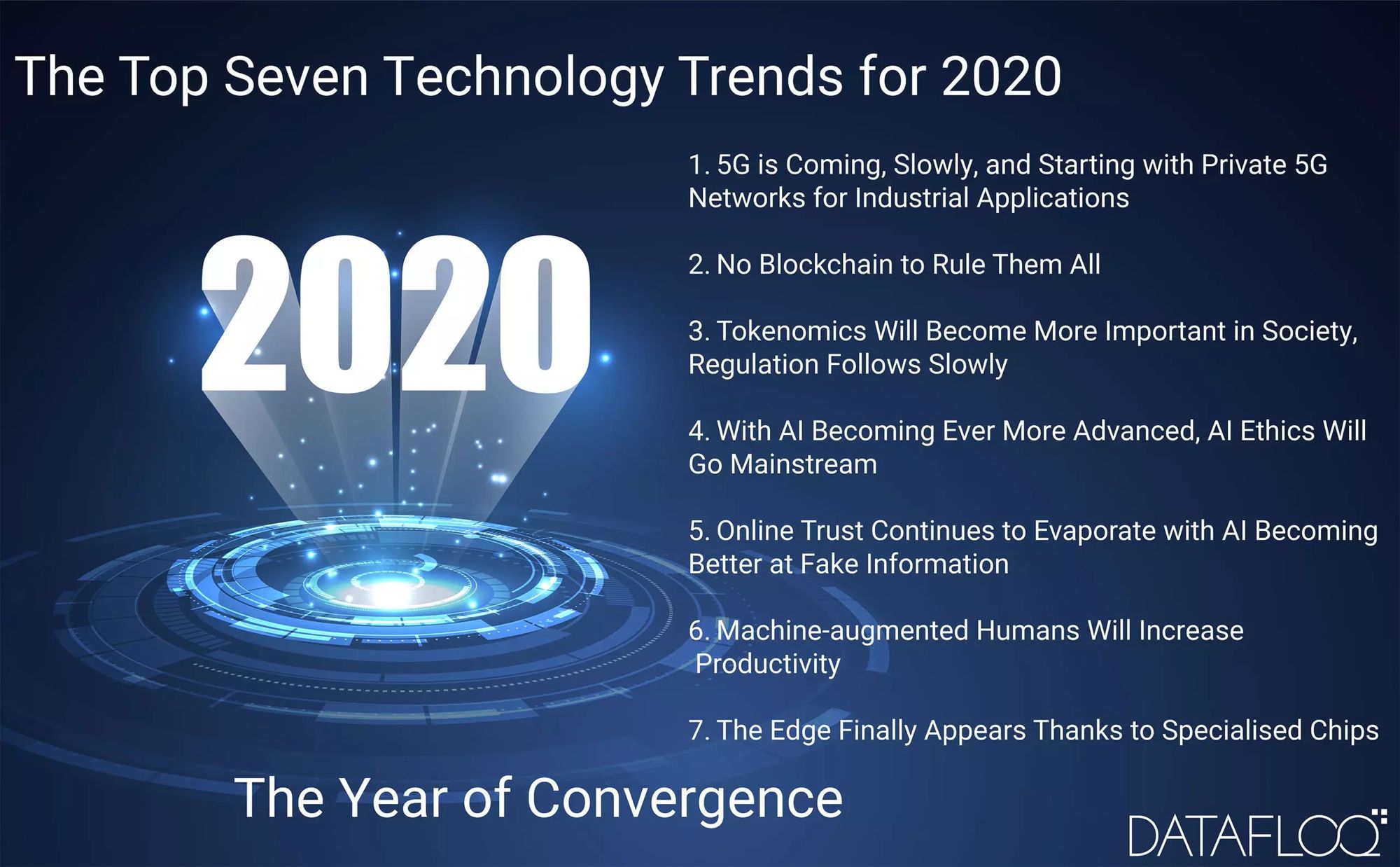
We have reached the end of 2019 and just like in previous years, I am looking ahead to see what organisations can expect next year. 2019 was the year of truth, with many enterprises developing blockchain proof of concepts, Google confirming a quantum supremacy breakthrough and more data breaches with the latest breach containing 1.2 billion records. Now for the 8th year in a row, I offer you my technology predictions for the next year, which I hope will help you prepare for 2020.
At the start of this century, 2020 still seemed so far away. To me, it felt that in 2020 we would live in a futuristic society, where we would fly from London to Sydney in a few hours, we would have flying cars, and the internet would be a place where people, organisations and machines would interact in a safe, private and secure way.
Unfortunately, none of this came true. Instead, we face numerous significant societal challenges including climate change, nationalism, fake news, an AI and quantum computing arms race, multiple data breaches and severe privacy violations by large centralised organisations. All these challenges give you plenty of reason to be very pessimistic about the future. However, I am a positivist, and I believe that as humans, we have the opportunity to use technology for good. Although new technologies will come with hurdles, eventually, we will do the right thing.
As such, there are more and more calls to develop ethical AI. Sir Tim Berners-Lee and 150 global organisations launched a plan to save the web from political manipulation, fake news and privacy violations and major cities are taking bold climate action. Therefore, maybe this third decade may, in hindsight, become known for the great turnaround, where humanity came together and started to fix the problems we have created in the past decades.
On that note, I would like to share my seven technology trends for 2020. I believe the coming year will be exciting as ever when it comes to technology. As I have said before, we live in exponential times and the more various technologies converge, the more exciting the opportunities become.
The Internet of Things will drive the data deluge, which will help train artificial intelligence, which will result in better applications and more personalisation. New developments in chip design will continue Moore’s law and result in more powerful machine learning algorithms, while decentralised solutions will bring back control to the consumer. In the next year, we will see technologies converge more and more. Therefore, 2020 will be the Year of Convergence. Here are the top seven technology trends for 2020:
1. 5G is Coming, Slowly, and Starting with Private 5G Networks for Industrial Applications
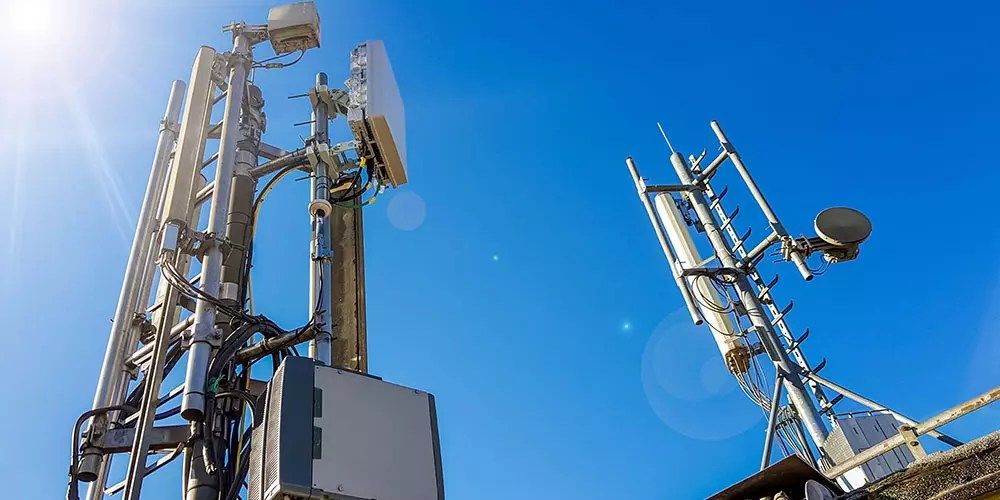
Source: TPROduction/Shutterstock
5G technology has been promised to arrive for a few years now. In 2019, we saw the first 5G networks becoming operational. Motorola was the first to launch a 5G phone, and many more companies will follow in 2020, though Apple might wait till 2021. 5G offers substantial benefits above the current 4G, though most consumers streaming media on their phones won’t notice many of these benefits, apart from faster download speeds. Not only because it will probably take another 2-3 years before we will have broad 5G coverage in many countries, but because most current applications are enterprise applications.
The benefits of 5G are huge compared to 4G: it offers much higher data speeds (1-20 Gbit/s), much lower latency (1 ms), increased capacity as the network grows and it uses very high frequencies (3.5 GHz).
The challenge with 5G is that it requires a lot more antennas than 4G networks. This is because 5G uses millimetre waves, which are a lot shorter than 4G wavelengths. As a result, it can carry a lot more data, but it means a much shorter range. As a result, to achieve a reliable 5G signal, you need a lot more 5G antennas. Placing these antennas will take time, so it will take another 2-3 years before we will have a broad, reliable 5G network.
However, until then, enterprises are already building their own private 5G network to enable machine-to-machine communication. 5G will be vital for the 4th industrial revolution, and the first successful pilots have been done. Earlier this year, Ericsson, Vodafone and eGO launched the first 5G car factory in Germany. Within the 8,500 sqm factory, every tool – including the smallest screwdriver – has been connected to a private 5G network containing 36 antennas.
In The Netherlands, Shell, Huawei, KPN, ExRobotics, Accenture and ABB have developed the largest industrial 5G field lab in Europe. Together, they are testing various 5G-applications for the port of Rotterdam. Test cases include mobile inspection robots to detect gas leaks, predictive maintenance of pipe racks and monitoring of production assets using wireless sensors.
As these examples show, the potential of 5G for enterprises is huge. They cannot wait until national telecom organisations have rolled out a reliable 5G network. Even more, they might not want to use a public network and prefer a private 5G network. Such an enterprise 5G network offers a lot of benefits for organisations. Therefore, in 2020, many more organisations will develop their own 5G network to optimise and streamline their business, using connected sensors, robotics and artificial intelligence that can communicate seamlessly with each other using 5G.
2. No Blockchain to Rule Them All
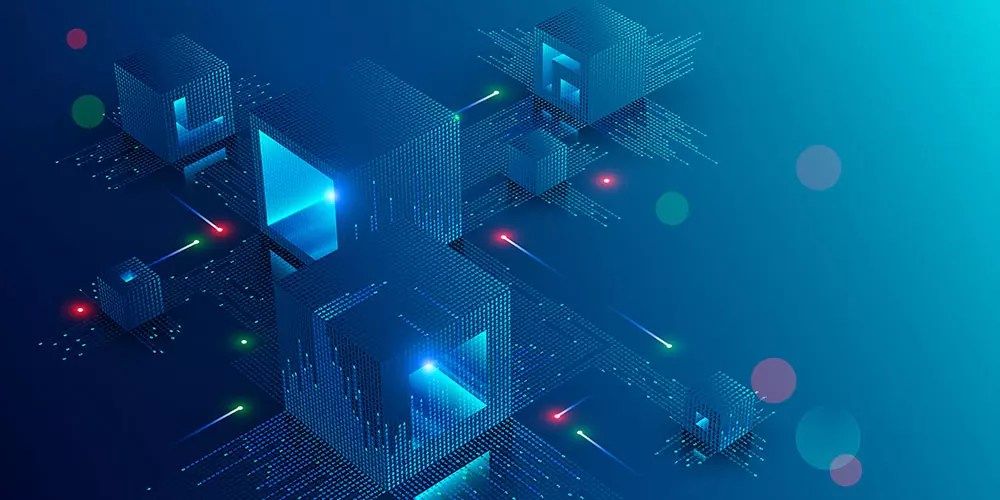
Source: Andrey Suslov/Shutterstock
In the past decade, there has been an arms race to develop the best blockchain that would be used by a large variety of decentralised applications and enterprises. A variety of communities, foundations and enterprises are working on developing the one blockchain to rule them all. For example, Ethereum aims to be the world’s computer, while EOS wants to be the most performant blockchain software in the market. The objective of these platforms, and many others, is to develop a versatile blockchain that can be used by a variety of organisations.
However, no blockchain can cater for any type of application. Some applications favour private transactions or private smart contracts, while others require high-throughput and low fees. Depending on the app you want to build, you would opt for a specific protocol and, undoubtedly, some constraints would appear, and adjustments would be required.
However, later this year or early next year, a new network will be launched: the Polkadot network. This network aims to enable interoperability between various blockchains under the protection of shared security. Polkadot will facilitate cross-blockchain transactions of any type of asset, data or token. As a result, applications can build a tailor-made blockchain that perfectly fits the needs of the application. No more restrictions but merely the best possible blockchain for the application. Thanks to the tools developed by the Web3 Foundation – called Substrate – developers can create a blockchain in minutes. Polkadot is not the only organisation trying to develop a network of blockchains; Cosmos is trying to do something similar, and they launched their Cosmos Hub in March 2019.
Therefore, thanks to the Polkadot Network and the Cosmos Network, in 2020, we will see more and more tailor-made blockchains that can work together in a secure environment. The era of one, complicated, blockchain to rule them all seems to be ending quickly.
3. Tokenomics Will Become More Important in Society, Regulation Follows Slowly
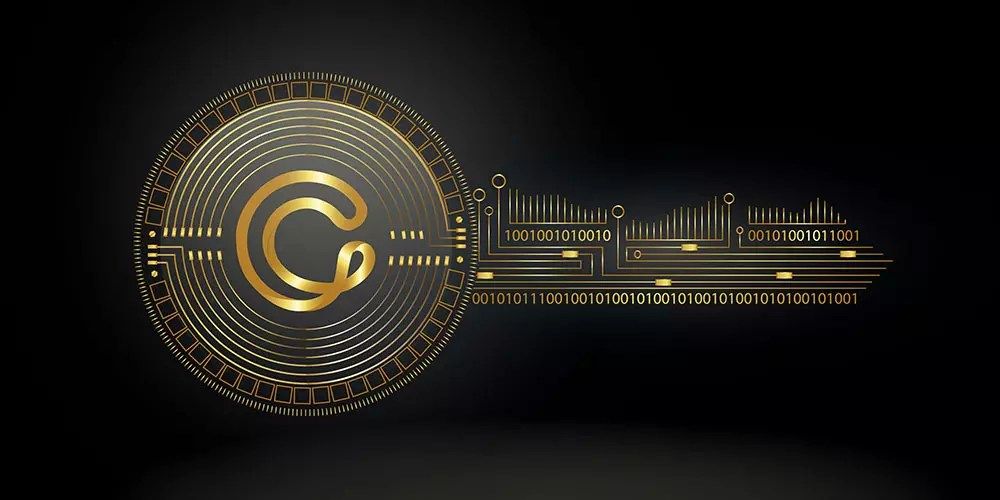
Source: Kuklos/Shutterstock
Tokens will become an essential tool for the organisation of tomorrow. In fact, tokens will be the fuel of the decentralised economy. They will define our future society thanks to their unique characteristics. First of all, tokens are programmable. This means that certain features or rules can be embedded in the token. These rules could be related to dividend release (the longer you hold a token, the more dividend you will get), voting rights (the longer and the more tokens you have, the more voting rights you will get) or other privileges. These rules can then become an effective way to incentivise ownership and ensure price stability.
A second significant benefit of tokens will be that it will result in an explosion of liquidity in the world economy. Security tokens are tokens that allow the owner of that token a (future) stake in a company or asset such as a painting, a car or a building, whether it be in the form of dividends, revenue share, or a price appreciation.
As a consequence, fractional ownership becomes possible, whereby a few or thousands of people can own an asset. The result is that all of a sudden, illiquid assets such as buildings or paintings become highly liquid, as the token representing the asset can be exchanged and settled instantly on a secondary market. When investors ‘discover’ the potential of security tokens, trillions of dollars of illiquid assets will become highly liquid, thereby having a profound impact on the world economy.
In 2019, we saw the first secondary markets open for the public. Exchanges for security tokens such as tZero, OpenFinance or the Malta Security Token Exchange will drive the adoption of (security) tokens in 2020. The more security tokens that become available, the more important tokenomics (or token economics) will become. Tokenomics is the study of how tokens work in the broader economic ecosystem. One reason why regulators responded so hard to the launch of Libra was that Libra has the potential to disrupt the current monetary and economic system altogether. Obviously, governments, central bankers and regulators are not too happy about that. However, tokens are here to stay, and tokenomics will increase in importance and regulators will have to scramble to catch up.
The challenge with token regulation, however, is that borders or local regulations do not stop tokens. By definition, tokens are global and, hence, regulation should be global. Unfortunately, in today’s world, such regulations are still very far off. Many regulators are still struggling to understand blockchain, let alone tokenomics and the impact of tokens on the world economy.
In 2020, we will see a drastic increase in security token offerings. We will see an increase in the tokenisation of illiquid assets and regulators and lawmakers will slowly adapt to the new world. Some countries will create regulation that will stifle innovation, while others will create regulation that embraces the new situation. Those countries with favourable, and clear rules will win the battle for startups and reap the benefits of increasing economic activities.
4. With AI Becoming Ever More Advanced, AI Ethics Will Go Mainstream

Source: MIT
Artificial intelligence continues to advance at breakneck speed. Fears for a new AI winter are not coming true in 2020, since research centres and enterprises, especially in the USA and China, continue to develop new AI applications. The AI arms race that I predicted two years ago will continue to take place and will even intensify since there is too much at stake. China will have the advantage of nearly unlimited data, while the Western world will have to play it smarter due to privacy regulations and, consequently, come up with innovative solutions.
Consequently, in 2020, we will see new AI breakthroughs. AI will become more advanced by playing against itself at levels and speeds unthinkable to humans (think of the 500 million games of hide and seek but then more). In addition, we will see transfer learning becoming more important and leading to new discoveries in AI development. Transfer learning enables an AI system to use a model developed for one task to use it as the starting point for a new task. Thereby speeding up learning considerably and making the AI system more flexible and adaptive.
While most of these developments will be taken place in research environments, slowly we will see this type of advanced AI move to the enterprise. With advanced AI becoming more known to the public, explainable AI and AI ethics will also go mainstream in 2020. The interest in AI ethics is clearly growing, and the number of articles on the topic seems to be exploding. And so it should be.
As such, organisations will have to pay more attention to the development of AI as AI itself is far from perfect. Too often, artificial intelligence is biased. Biased AI is a serious problem and challenging to solve as AI is trained using biased data and developed by biased humans. Biased and not-well-thought-through AI will cause significant harm for consumers, organisations and societies. The examples of problems caused by AI are plenty and will increasingly draw media attention, as Apple’s ‘sexist’ credit card issue showed.
Ensuring machine ethics is a next-level challenge. The difficulty with creating an AI capable of ethical behaviour is that ethics can be variable, contextual, complex and changeable. To bring our moral values to AI, we need to have in-depth discussions with various stakeholder groups, and I believe that in 2020, more attention will be brought to this important topic.
5. Online Trust Continues to Evaporate with AI Becoming Better at Fake Information
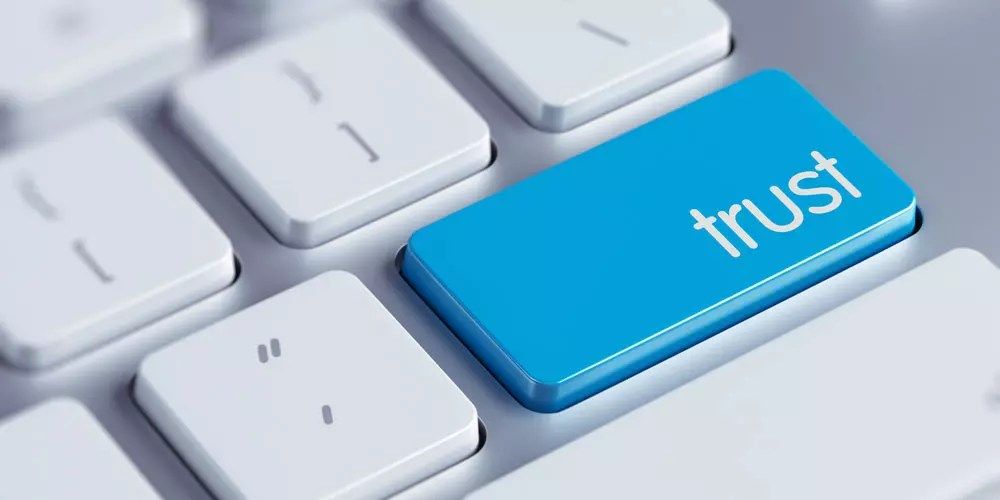
Source: xtock/Shutterstock
The internet has a problem and is broken. Even the founder of the web, Sir Tim Berners-Lee recently launched a plan to save the web from “from political manipulation, fake news, privacy violations and other malign forces that threaten to plunge the world into a digital dystopia”. The Contract for the Web aims governments, organisations and citizens to commit to safeguarding the web. The internet has degraded trust among individuals and organisations. The anonymity of the internet has resulted in all kinds of nasty behaviour. It means that we have a serious trust problem, or as the World Economic Forum put it already a few years ago:”
“Trust is a social, economic and political binding agent. A vast research literature on trust and social capital documents the connections between trust and well-being, collective problem solving, economic development and social cohesion. Trust is the lifeblood of friendship and caregiving. When trust is absent, all kinds of societal woes unfold, including violence, chaos, and paralysing risk-aversion.
There is a considerable concern that the way people use the internet is degrading trust. The fate of trust and truth is up for grabs. On the one hand, many worry that the fake news ecosystem preys on deep human instincts. Preferences for convenience, comfort, and information that reinforces their views make people vulnerable to the ways new tech tools can identify, target and manipulate them.”
Unfortunately, it does not seem that in 2020 we can bring back online trust. Thanks to artificial intelligence, bots are getting better in creating fake new, chaos and spreading online disinformation. In the past years, we have seen many examples where AI has been used to cause harm deliberately. These examples include deepfakes to generate fake news and hoaxes or privacy-invading facial recognition cameras. Although Twitter announced to ban political ads, the fact that Facebook refuses to do so, and even refuses to remove fake ads, shows that the solution to this trust problem will not come from existing parties.
A solution can only come from new startups that do take online trust serious or from regulation to force the large tech companies to do better. In 2020, regulation will slowly drive transparency, integrity and accountability. Still, it will not come from the large tech companies such as Google and Facebook, despite them having signed the declaration for a better web. These companies will only change if regulations force them, but since their lobbying power is too big, regulations will not be strong enough to ensure change. It is a vicious circle which only a strong government can break. Billion-dollar fines by the EU are a step in the right direction, but these companies make so much money with advertising that they don’t really care about it.
If we want to fight AI-drive disinformation on the internet, we need a new web, where trust and reputation are a given, self-sovereign identities are the norm and consumers control their own data. Although the decentralised ecosystem is still being developed, in 2020, we will slowly see steps in the right direction to fix the web.
6. Machine-augmented Humans Will Increase Productivity
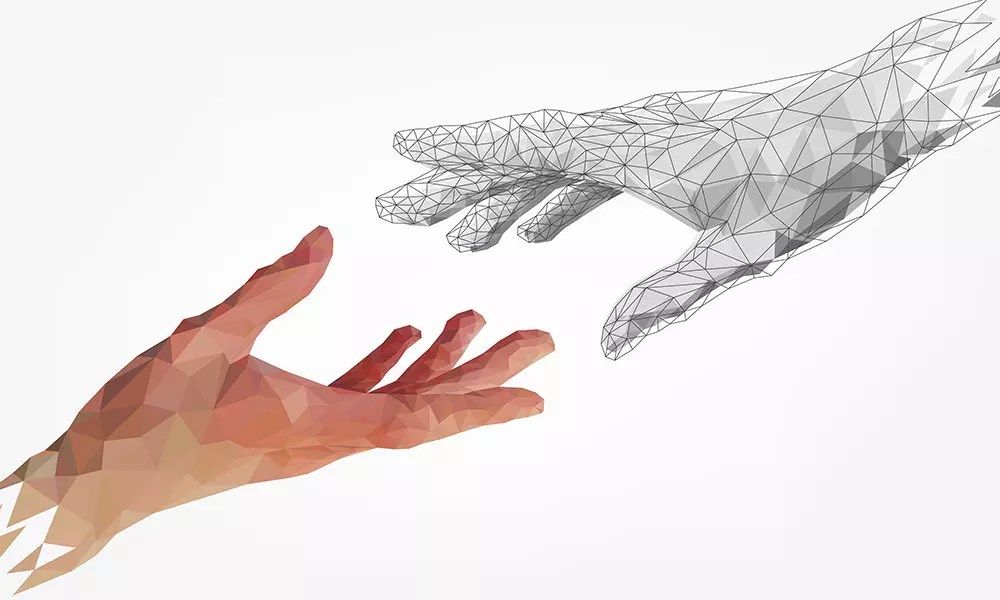
Source: Lidiia/Shutterstock
The future of work is automated and augmented. Artificial intelligence will play a significant role in how we work and AI will fundamentally change your workplace. Whether it is chatbots assisting call-centre agents, factory workers using an exoskeleton to reduce fatigue and injuries of workers, facial recognition to assist in recruiting staff or autonomous databases freeing up database engineers. Enterprises are starting to see the clear benefits of human-machine collaboration.
One technology that will drive the augmented organisation is the digital twin. A digital twin is a digital replica of a thing, process, factory or organisation. It combines the physical and the virtual world to allow for seamless interaction between the two entities. A digital twin enables enterprises to simulate changes to a process, robot or factory before actually making that change. In addition, digital twins provide real-time insights into these assets or processes and with that, they augment the organisation.
The more artificial intelligence is being implemented in an organisation, the more humane the organisation will become, while increasing productivity. Simply, because AI will free-up staff from mundane or simple tasks, giving them more time to take care of the more complex problems or to ensure the best customer service. In 2020, more organisations will understand the importance and value of digital twins and human-machine interactions and will start to integrate AI in their organisation.
7. The Edge Finally Appears Thanks to Specialised Chips
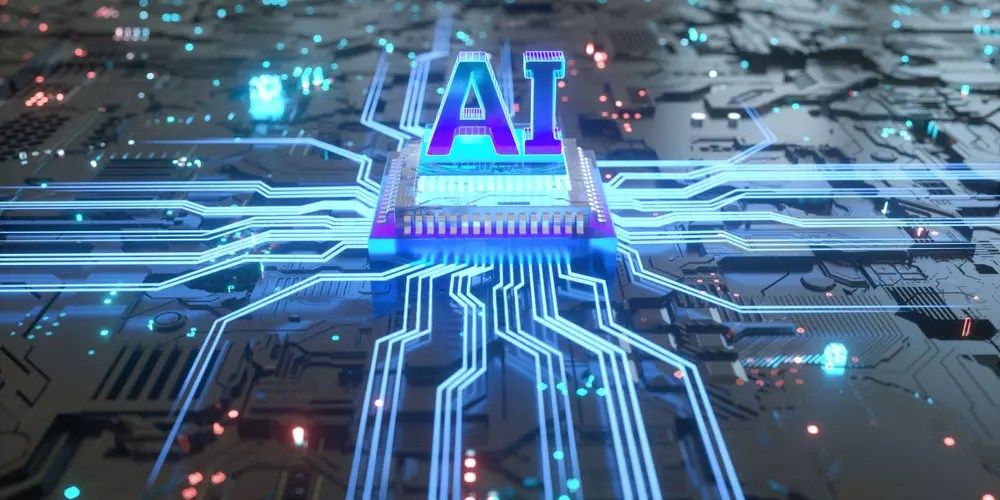
Source: HelloRF Zcool/Shutterstock
Most AI processing today is done in the cloud, simply because deep learning models require heavy computational power. However, with the number of connected devices growing exponentially, an increasing amount of AI processing will no longer be done in a cloud-based data centre. Instead, it will be done on the edge of networks, by specially designed AI chips.
These miniature chips and sensors will enable distributed things to perform advanced analytics in real-time. Last year, Google already unveiled the Edge TPU, a tiny AI chip to carry out machine learning tasks within IoT devices. Also, Arm stripped down AI-processors to make them suitable for the edge, and the French startup GrAI Matter Labs created its first AI processor for ultra-low latency and low power processing. Tiny AI accelerators that can carry out machine learning jobs in the Internet of Things devices at the edge are becoming a major thing these days.
Without these tiny AI chips, the Internet of Things will have difficulty bringing real value for businesses. Simply, because millions of sensors at the edge will create too much data to send back-and-forth for analysis. Analytics at the edge will help make use of the vast amounts of data being created by those sensors while allowing the devices to act on those insights instantly.
Tractica forecasts that devices with AI-edge capability will increase to 2.6 billion units worldwide annually by 2025, compared to 161 million devices in 2018. Therefore, in 2020, we will see more technology companies design new and advanced edge AI chip technology. This convergence of artificial intelligence, miniaturised chips and connected devices will lead to the Intelligent Internet of Things, which will drive the 4th Industrial Revolution in the years ahead.
2020: The Year of Convergence
Next year, we will enter the third decade of this century, and the future looks more exciting than ever before. Thanks to the convergence of different technologies, organisations can increase productivity, become smarter, more agile, automated and more humane.
5G will slowly become available to the public, but in the meantime, enterprises will build their own private 5G networks to enable smart industrial applications. We will see more and more blockchain applications and with that, also more and more tailor-made blockchains, instead of one blockchain to rule them all. With blockchain winning in popularity, also tokens become more accepted. In fact, tokens will fuel the decentralised economy, though regulators will struggle to keep up and develop regulations that will enable innovation instead of stifling it.
Apart from the developments of distributed ledger technology, also AI will become more advanced in 2020. New training and learning methods will result in more advanced AI systems. Some of these AI systems will undoubtedly cause harm and, therefore, media attention for AI ethics will grow. Bad actors will use AI to do harm and cause chaos using advanced misinformation. As a result, the more we will live our lives online, the more trust will evaporate since fake news and fake bots are difficult to stop.
Despite the negative side of AI, humans and machines will increasingly collaborate and interact, resulting in the augmented human. The more AI and employees work together, the higher the productivity will be. Finally, we will see AI move to the edges, where miniaturised AI chips will enable the Intelligent Internet of Things.
In 2020, technologies will more and more converge, and when they do so, intelligent applications and solutions become available. The convergence of technologies will kick-start the third decade, and the results of it will be felt in the years to come.
What do you think of these seven technology trends for 2020? Anything you want to add? Please join the discussion in the comments below. If you want to download the presentation of the seven top technology trends for 2020, click here.
Image: Panuwatccn/Shutterstock
This article was originally published on Datafloq.





